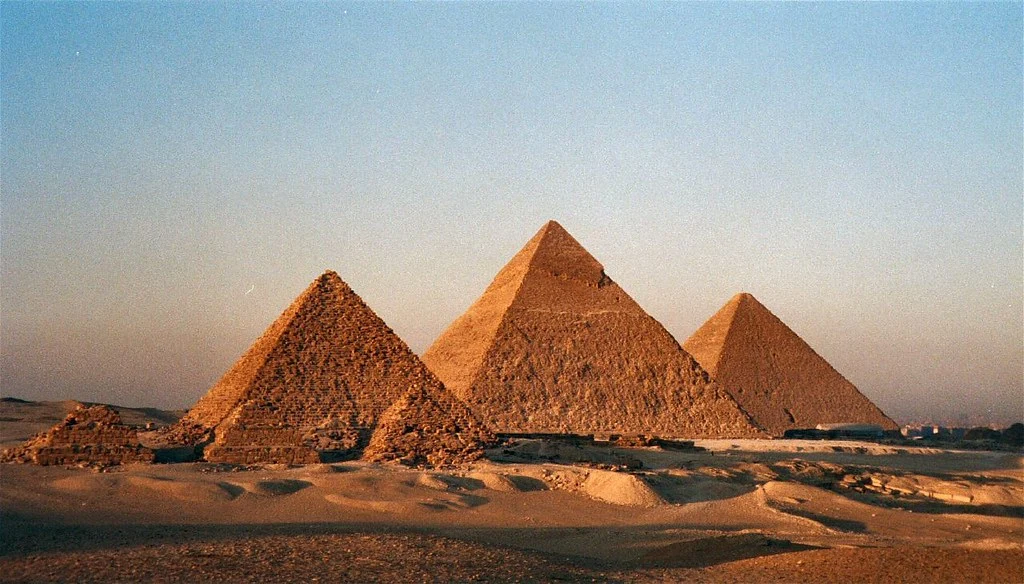Introduction
Ancient Egypt is a land full of wonder and mystery. From the grandeur of the pharaohs to the monumental structures they left behind, there is no shortage of fascinating stories to uncover. One of the most intriguing aspects of Ancient Egypt is undoubtedly the pyramids – massive structures that were built thousands of years ago and still stand today. In this article, we will explore the greatest pharaohs of Ancient Egypt and the mystery surrounding the construction of the pyramids.
The Great Pharaohs of Ancient Egypt
Khufu
One of the most famous pharaohs of Ancient Egypt was Khufu, also known as Cheops. He is perhaps best known for commissioning the Great Pyramid of Giza, one of the most impressive structures ever built. It is estimated that it took over 20 years to complete the pyramid, and it is still considered an engineering marvel to this day.
Khafre
Khafre was another great pharaoh who is believed to have built the second largest pyramid in Giza. He is also known for his magnificent Sphinx, a massive statue with the head of a human and the body of a lion.
Menkaure
Menkaure was a pharaoh who is best known for his pyramid in Giza, which is the smallest of the three. However, it is still an impressive feat of engineering and stands as a testament to the skills and ingenuity of the Ancient Egyptians.
The Mystery of Ancient Pyramids
The pyramids of Ancient Egypt have fascinated people for thousands of years, and even today, we are still uncovering new information about how they were constructed. Here are some of the most interesting facts and theories about the pyramids:
Pyramid Construction
The construction of the pyramids was an enormous undertaking that required the labor of thousands of workers. It is believed that the blocks used to build the pyramids were quarried nearby and transported using a system of ramps and pulleys. Despite the sheer size and weight of the blocks, the Ancient Egyptians were able to move them with incredible precision.
Secret Chambers
One of the most enduring mysteries surrounding the pyramids is the existence of secret chambers. Many believe that there are still undiscovered chambers within the pyramids, and some have even speculated that they may contain hidden treasures or even the remains of pharaohs who were never found.
Archaeological Discoveries
In recent years, archaeologists have made some fascinating discoveries related to the pyramids. For example, in 2017, a team of researchers discovered a previously unknown void within the Great Pyramid of Giza using a technique called muon radiography. While the purpose of the void is still unknown, it is an exciting discovery that may lead to new insights into the construction of the pyramid.
FAQs
Who were the greatest pharaohs of ancient Egypt?
There were many great pharaohs throughout ancient Egyptian history, but some of the most well-known include Khufu, Hatshepsut, Tutankhamun, Ramses II, and Akhenaten.
How were the pyramids built?
The exact methods used to build the pyramids are still somewhat of a mystery, but historians believe that workers quarried large blocks of limestone and transported them using sledges, ramps, and pulleys. They then used simple machines and brute force to lift the blocks into place.
Why were the pyramids built?
The pyramids were built as tombs for the pharaohs and their consorts. They were designed to house the pharaoh’s body, along with everything he would need in the afterlife, including food, clothing, and treasures.
What secrets do the pyramids hold?
Despite centuries of exploration and study, there are still many mysteries surrounding the pyramids. Some theories suggest that there are hidden chambers, passageways, or treasures that have yet to be discovered.
What was the significance of the Sphinx?
The Sphinx was a mythical creature with the body of a lion and the head of a human. It was often depicted in ancient Egyptian art and mythology as a symbol of strength, power, and wisdom. The Great Sphinx of Giza, which is located near the pyramids, is thought to have been built during the reign of Khafre and is believed to have been intended as a guardian of the pharaoh’s tomb.
How did the pharaohs rule Egypt?
The pharaohs were considered divine rulers, believed to be the incarnation of the god Horus. They had absolute power over Egypt and its people and were responsible for maintaining Ma’at, the ancient Egyptian concept of truth, justice, and cosmic order.
How did ancient Egyptian religion influence the construction of the pyramids?
Ancient Egyptian religion played a significant role in the construction of the pyramids. The pharaohs were believed to be divine beings who would ascend to the heavens after death, and the pyramids were designed to help them achieve this goal. The pyramid’s shape represented the pharaoh’s journey to the afterlife, and the elaborate burial chambers and rituals were intended to ensure his safe passage.
What was the role of the priests in ancient Egyptian society?
The priests played a vital role in ancient Egyptian society, serving as intermediaries between the gods and the people. They were responsible for performing religious ceremonies, maintaining the temples and shrines, and interpreting the will of the gods. They were also often consulted by the pharaohs for advice on matters of state.
What is the legacy of ancient Egypt?
Ancient Egypt has left a lasting legacy on the world, with its art, architecture, language, and religion influencing cultures across the globe. The pyramids, in particular, have become iconic symbols of ancient Egypt and continue to fascinate people around the world to this day.

1 thought on “Mystery of Ancient Pyramids ?”